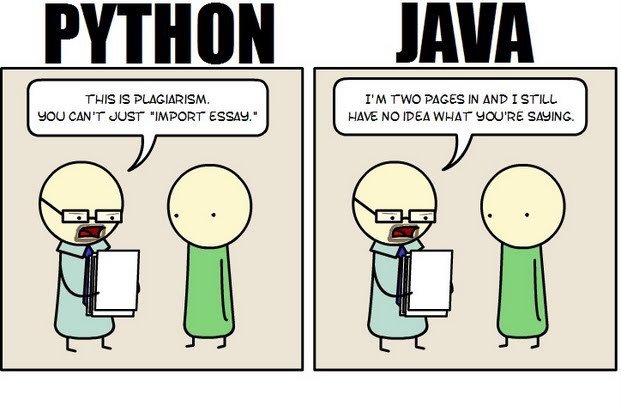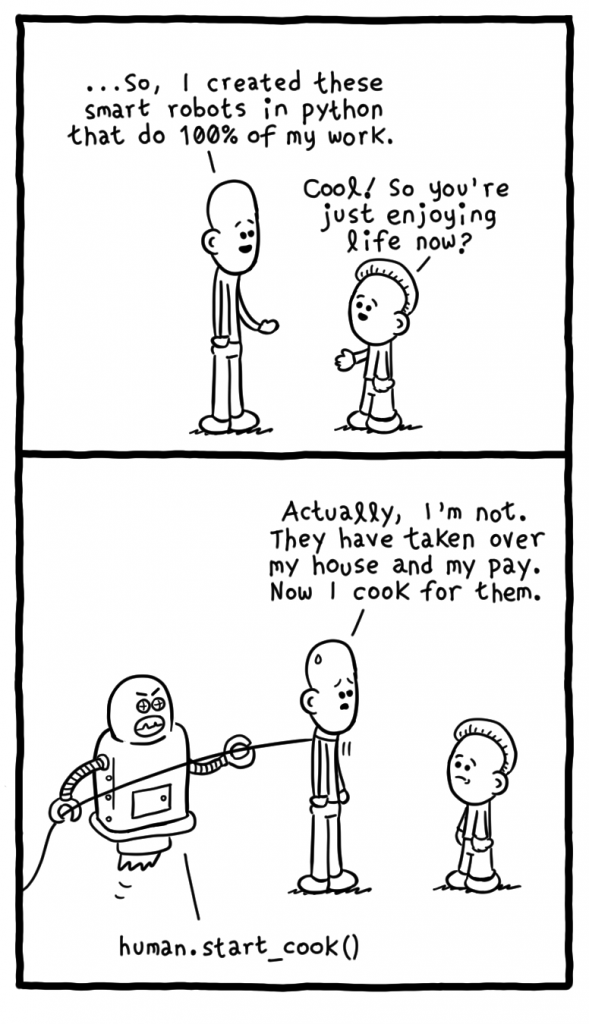First released in 1991, Python is well established - but it's developer Guido van Rossum couldn't have imagined that it would go on to become the world's fastest growing programming language.
In recent years, the popularity of Python as a programming language has been surging - and if this trend continues, it may well be on track to become the world's most popular programming language.
So why is there so much interest in Python?
The Zen of Python is a collection of software principles that influences the design of the language. These principles give you some insight into the philosophy behind Python, and can also help understand why Python is such a popular programming language.There are perhaps three key reasons why Python is so popular.
Firstly, Python incredibly easy to learn and accomplishing something in Python usually involves far fewer lines of code compared to other languages.

Add to this the fact that it also has a plethora of documentation and community support online, thanks to its longevity and massive user base. As a result of this, Python is quickly becoming the gateway language for a raft of new programmers (and is also one of the most sought after programming languages by employers).
Secondly, it's extremely readable. This kind of goes hand in hand with the first point, but again even for seasoned developers, this is an extremely important factor. Let's say you're coding an extremely complicated algorithm or application, or perhaps you're even in a large team of programmers working on a project. Python's logic is easy to follow, even by an untrained eye, which makes tackling complex tasks and collaboration miles easier.

Lastly, Python is incredibly versatile. There are over 125,000 third party Python libraries which are useful for almost any purpose - from traditional web development, to more cutting edge use cases, such as AI and machine learning. Leveraging these libraries allows you to use Python to solve an extremely wide range of problems without needing to code every component from scratch.

It's these more cutting edge uses, in the area of big data and machine learning, that have really fuelled Python's recent growth.
Python is #1 for Machine Learning
Python is one of the go to languages for data analysis and machine learning, used extensively by big data companies like Google, Facebook, Spotify, Netflix and more. According to IBM, Python is considered the number one programming language for machine learning. In layman terms, machine learning is using a machine to use data to make intelligent decisions. The more data you can feed it, the more intelligent and accurate those decisions should become.Why has Python experienced so much growth in this space? Well, when you're dealing with vast and complex datasets and complex algorithms, you need a programming language that is clean and easy to understand, by you and anyone who may need to read and collaborate on the code.
Thanks to it's simplicity, Python became the go to language of data scientists - they could code data modelling experiments much more quickly in Python than in other languages, so much so that in the early days of Google a decision was made to "Python where we can, C++ where we must".
As a result of Python's popularity amongst data scientists, there are now extremely powerful Python packages for big data analysis and machine learning. Coding in Python is the natural 'easy' choice for data analysis as these ready made packages make data analysis incredibly simple.
Need to build a neural network? Use Keras.
Need to process natural languages? Use NTLK.
Need to mine the web for data sets? Use Scrapy.
Need to visualise your data in human readable graphs? Use Seaborn.
Python for Web Apps: Meet Django

Python's versatility is key, and it's not just useful for data analytics - Python is increasingly being used to build all manner of web applications, often using Django as a framework.
Django is used by some of the largest sites and web apps on the Internet, including Instagram, Pinterest, Disqus, Bitbucket, NASA and The Washington Post to name but a few.
Using Django as a framework allows you to leverage Python with all the benefits of an application framework, allowing you to take web applications from concept to launch as quickly as possible. Django takes much of the hassle out of building the basics of a web application so you don't need to reinvent the wheel. There are also many applications which are built on the Django framework, such as the Wagtail CMS.
Getting Started with Python
To get started, log into cPanel and locate the new 'Setup Python App' icon to begin. Here's how.As an example, we've created an in-depth tutorial for how to install the Wagtail CMS, which is built in Python.
If you have any questions about deploying Python Applications on Kualo, don't hesitate to get in touch with our support team via your client area, and we'd be more than happy to help.
If you run your own server with Kualo and would like to enable Python, please get in touch.




